It's October, which means it's Breast Cancer Awareness Month. While regular check-ups with your GP are important, so is learning how to check your breasts at home.
Breast cancer is the second most common cancer among women in Vietnam, with over 11,000 diagnoses being made every year. What's more, approximately eight women are diagnosed with the illness every single day. Given its prevalence in this country, it's important we give ourselves the best chance; that is by regularly checking our breasts for changes, no matter how big or small.
But how? It's not the type of thing they teach us in school, and unless a doctor has shown you, it can seem like a foreign concept. For that reason, we've gathered and compiled expert advice from City International Hospital to make the process simple and straightforward.
Before you get started
There are a few things that will make life (and self-exams) easier for you. The main thing is to find your 'normal', and seek professional advice if your normal begins to change.
Note that your 'normal' will change at various points of your menstrual cycle. This is okay. Become familiar with how your breasts look and feel before, during and after your period. After a few months, you'll see a pattern of what's normal for you. Similar changes may also happen during menopause or breastfeeding.
- Firstly, develop a routine. For at-home checks to work, you need to do them regularly. Choose something you already do on a regular basis (be it having a shower, listening to a weekly podcast, or even just getting dressed) and use that activity as a marker. Soon, doing one with the other will become second nature.
- Secondly, keep a journal, either on your phone or on paper. Make a note of what you feel, the color/pigmentation of your breasts, and note if one looks bigger than the other. You might think you'll remember the details from check-to-check, but it's human nature to forget. Jot down everything, including the day's date, just in case.
- Thirdly, don't be afraid if you feel something unusual. Not all lumps are cancerous. In fact, more often than not, there's nothing to worry about. Simply make a note of it, and arrange an appointment with your doctor at your earliest convenience.
How to check your breasts at home
Approximately 74% of Irish women with breast cancer discovered the lump themselves, which highlights the importance of examining your breasts at home. Here are four ways to do that:
1. Stand in front of a mirror and become familiar with what your breasts look like from all angles. Note their size, pigmentation, the appearance of the skin and the appearance of the nipple.
2. Using four fingers and the flat of your hand, begin at the outer edge of the breast (nearest your chest) and work around in a full 360-degree circle. Keep pressing the breast in circular motions, noticing if any breast tissue feels different from the rest. Continue feeling around in circular motions, moving inwards, until you reach the nipple.
3. Next, check your armpit, as breast tissue extends here. Raising one arm up above your head, use your four fingers (flat, just as before) and feel around the breast tissue. Repeat with your other armpit. Some women find this easier to do while lying down.
4. Gently squeeze your nipple and check for discharge.
1.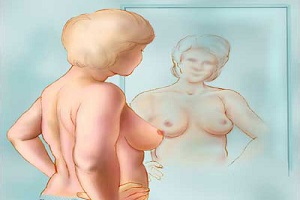 |
2.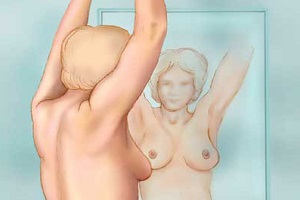 |
3.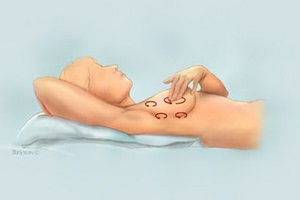 |
4.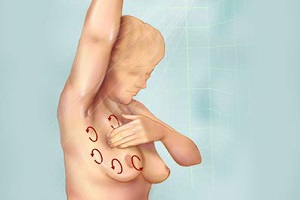 |
See a health care provider if you:
- A change in size or shape – it may be that one breast has become larger than the other.
- Changes in the nipple – in direction or shape. Is it pulled in or flattened?
- Changes on or around the nipple – is there a rash, flaky or crusted skin?
- Changes in the skin – dimpling, puckering or redness.
- 'Orange peel’ appearance of the skin caused by unusually enlarged pores.
- Swelling in your armpit or around your collarbone.
- A lump, any size, or thickening in your breast.
- Constant pain in one part of your breast or armpit.
- If you’ve had a benign lump in the past, don’t assume a new lump will also be benign. The new lump may not be breast cancer, but it’s best to make sure.
Risk factors
While there is no way to prevent the illness completely, there are a few lifestyle changes that can reduce your risk. These are:
- Limit alcohol consumption
- Don't smoke
- Get active; exercise regularly
- Maintain a healthy weight
- Be breast-aware; i.e. be familiar with your 'normal'.
Remember, when in doubt, always seek further advice from your GP or local healthcare practitioner.
Breast screening
It’s important to check your breasts regularly because the earlier breast cancer is diagnosed, the better the chance of successful treatment. It doesn’t matter when you check your breasts, as long as you check them regularly. Screening exams can detect cancer early, when it's easiest to treat. Women age 25 to 39 should consider a clinical breast exam every one to three years. Women 40 and older should get an annual breast exam and a screening mammogram.
Breast Cancer Screening Package at CIH
| Tests included |
Women Age </= 40 |
Women Age > 40 |
| Medical consultation | ||
| Comprehensive medical history & physical examinations | |
|
| Specialist consultation | |
|
| Diagnostic Imaging | ||
| Breast Ultrasound | |
|
| Mammography/ or Breast MRI | |
|
| Total cost of the individual tests (VND) | 820,000 | 1,660,000 |
| Package Price (VND) | 700,000 | 1,320,000 |
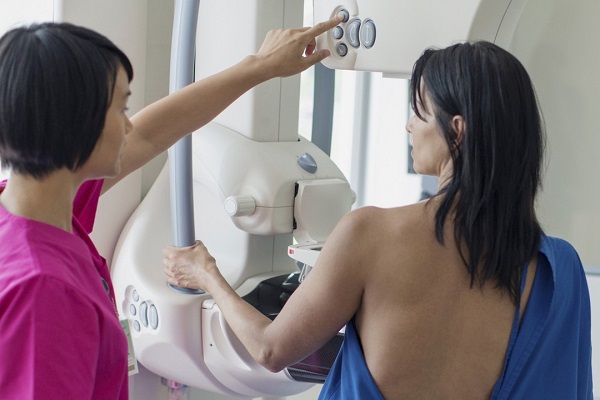
Sign up for your screening at City International Hospital's registration counter or 028.6280.3333 (ext .8128) for instruction
For appointment or screening service consultation provided by OB/GYN Department, please contact:
- Ms. Võ Thị Mỹ Liên: (8428) 6280 3333, ext. 8424
- Ms. Nguyễn Thị Lệ: (8428) 6280 3333, ext. 8402
For appointment or more information about the services provided, please contact City International Hospital
- Operator: (8428) 6280 3333, ext. 0
- Address: Level 3, No. 3, 17A Street, Binh Tri Dong B Ward, Binh Tan Dist. (Next to AEON Mall Binh Tan). Ho Chi Minh City.
- Website: https://cih.com.vn/en/










